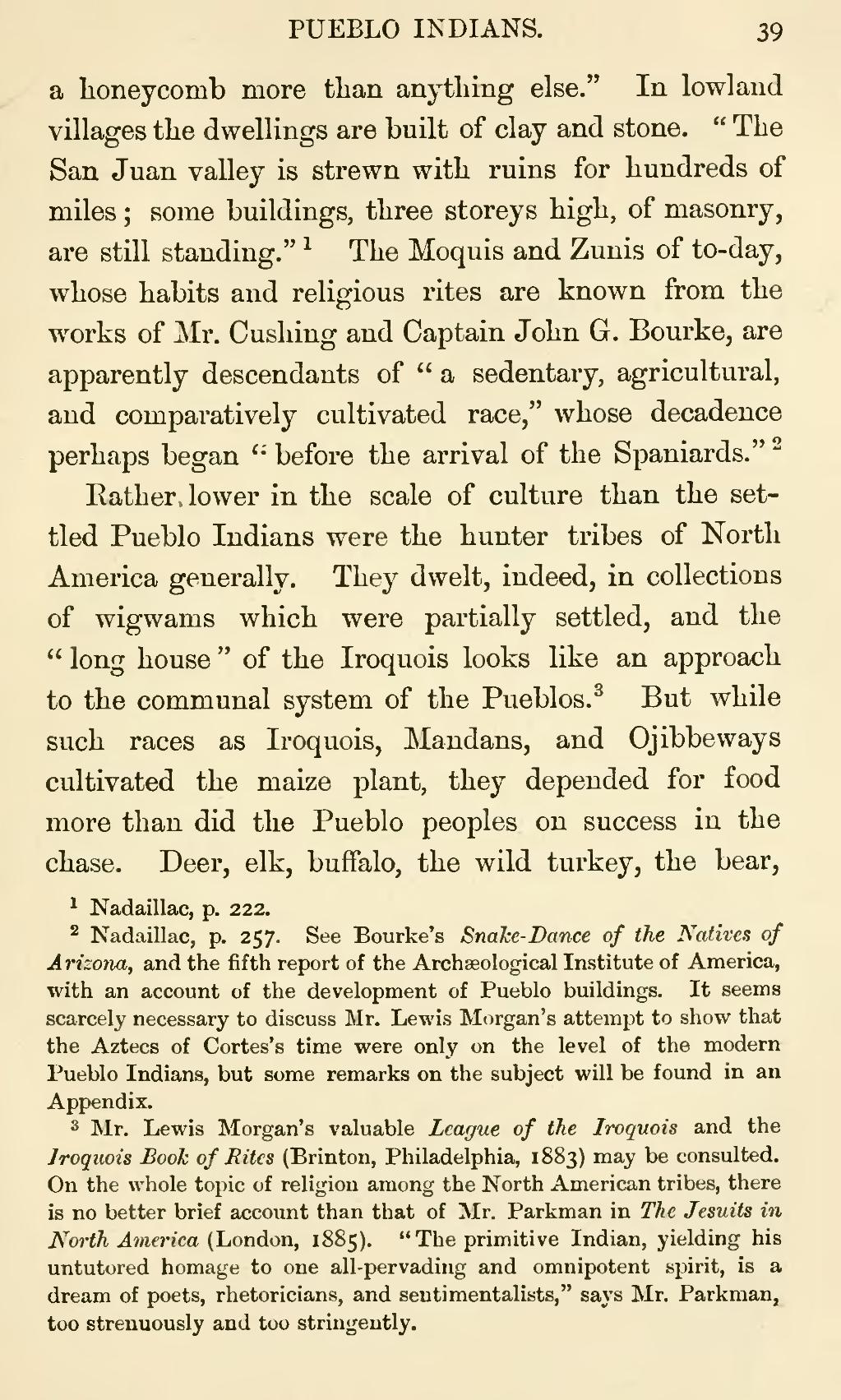a honeycomb more than anything else." In lowland villages the dwellings are built of clay and stone. "The San Juan valley is strewn with ruins for hundreds of miles; some buildings, three storeys high, of masonry, are still standing."[1] The Moquis and Zunis of to-day, whose habits and religious rites are known from the works of Mr. Gushing and Captain John G. Bourke, are apparently descendants of "a sedentary, agricultural, and comparatively cultivated race," whose decadence perhaps began "before the arrival of the Spaniards."[2]
Rather, lower in the scale of culture than the settled Pueblo Indians were the hunter tribes of North America generally. They dwelt, indeed, in collections of wigwams which were partially settled, and the "long house" of the Iroquois looks like an approach to the communal system of the Pueblos.[3] But while such races as Iroquois, Mandans, and Ojibbeways cultivated the maize plant, they depended for food more than did the Pueblo peoples on success in the chase. Deer, elk, buffalo, the wild turkey, the bear,
- ↑ Nadaillac, p. 222.
- ↑ Nadaillac, p. 257. See Bourke's Snake-Dance of the Natives of Arizona, and the fifth report of the Archæological Institute of America, with an account of the development of Pueblo buildings. It seems scarcely necessary to discuss Mr. Lewis Morgan's attempt to show that the Aztecs of Cortes's time were only on the level of the modern Pueblo Indians, but some remarks on the subject will be found in an Appendix.
- ↑ Mr. Lewis Morgan's valuable League of the Iroquois and the Iroquois Book of Rites (Brinton, Philadelphia, 1883) may be consulted. On the whole topic of religion among the North American tribes, there is no better brief account than that of Mr. Parkman in The Jesuits in North America (London, 1885). "The primitive Indian, yielding his untutored homage to one all-pervading and omnipotent spirit, is a dream of poets, rhetoricians, and sentimentalists," says Mr. Parkman, too strenuously and too stringently.
